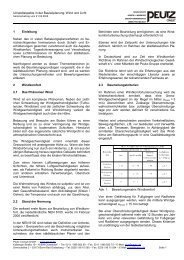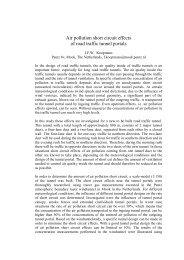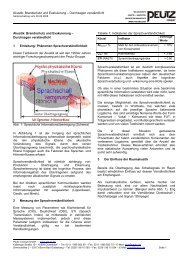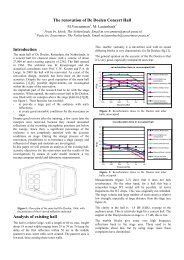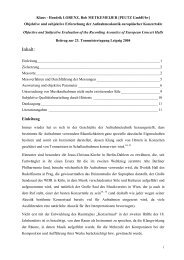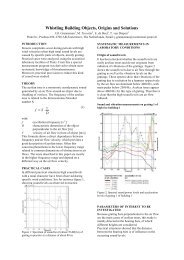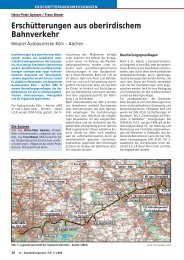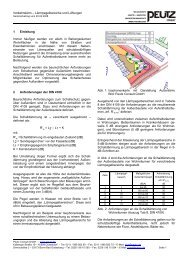Pipe noise - PEUTZ CONSULT GmbH
Pipe noise - PEUTZ CONSULT GmbH
Pipe noise - PEUTZ CONSULT GmbH
You also want an ePaper? Increase the reach of your titles
YUMPU automatically turns print PDFs into web optimized ePapers that Google loves.
Figure 4: Pressure drop in stages.<br />
Restriction orifices<br />
PAGE 6<br />
A restriction orifice can be made with one hole or a number of holes. While the free<br />
crosssection areas are the same in both cases, the reduction of turbulence in the orifice<br />
with several holes, as compared with a single hole, can reach approximately<br />
7.lg(n) dB(A), where n is the number of holes.<br />
Muffler<br />
In an effective muffler, gas flows through a diffuser in combination with sound absorbing<br />
material (steel wool and/or rock wool). As the muffler only reduces sound radiating at the<br />
downstream side of piping, insulation of the muffler housing itself, including the nearby<br />
turbulence generating valve, can also be necessary.<br />
INSULATION<br />
Effect limitations<br />
Acoustical insulation of sound radiating surfaces is an effective and relatively cheap way<br />
of reducing the high frequency flow <strong>noise</strong> radiated by piping, piping supports,<br />
instrumentation, etc.<br />
In practice, piping will often be constructed as a thermal insulation. However, this can<br />
only provide effective sound insulation if it is mounted in an acoustically correct way.



